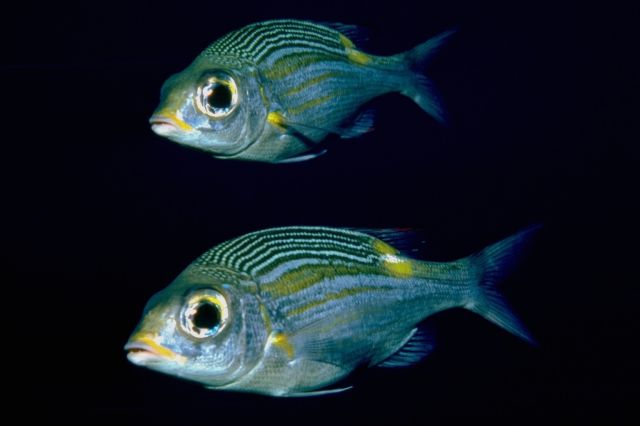

Back to Chapter 2
Previous case study - tool use in cephalopods
*** SUMMARY of Conclusions reached
References
Sufficient conditions for agency in a social context
Most of the sufficient conditions for operant agency and navigational agency can also be found in a social context. The big difference is that there is no need, in a social context, for internal representations of one's current motor output, as one reaches one's goal not by fine-tuning one's motor output but by following the example of another knowledgeable individual (one's role model). The relevant internal representation in social learning is one where copying the activities of a role model leads to the attainment of one's own goal. :
DF.4 We are justified in ascribing agency to a social animal if the following features can be identified:
(i) A personal goal or end-state, which is (at least qualitatively) the same as the goal which one's role model is also currently pursuing or has pursued in the past;
(ii) Behaviour which is modelled on that of a knowledgeable individual (the role model or trainer);
(iii) Sensory capacities: the ability to discriminate between individual conspecifics, as well as between members and non-members of one's group;
(iv) Memory capacity: the ability to keep track of the status of individuals within one's group, and remember one's past interactions with them (book-keeping);
(vi) Flexible behaviour: the ability to acquire new patterns of behaviour from observations of other individuals;
(vii) Learning: the ability to learn from observing the behaviour of other individuals (observational learning) and to acquire new knowledge that is specific to one's group (traditions);
(viii) Fine-tuning (controlled, modulated activity): the ability to adjust one's social behaviour to take account of differences between individuals, as well as changes in a given individual's behaviour;
(ix) Representation: the ability to represent another individual as useful, reliable role model, to be followed in the pursuit of important objectives such as food. As well as representing a certain individual as a model, the observer needs to be able to represent the activity of following the role model's example as a means of attaining its own ends;
(x) Self-correction: the ability to rectify one's social behaviour when one's expectations of another individual are disappointed.
Case study: social learning in fishes

Brown and Laland (2003) describe the rationale for social learning in fishes:
In making decisions, such as how to find food and mates or avoid predators, many animals utilise information that is produced by others. Such individuals are referred to as 'eavesdroppers' in the signal-receiver literature (McGregor 1993) and 'observers' in the social-learning literature (Heyes and Galef 1996). Socially transmitted information may simply be a by-product of the demonstrating individual's behaviour or a signal targeted towards a particular audience (2003, p. 280).
According to Brown and Laland, "research over the last 50 years has demonstrated that social learning is common amongst fish, birds and mammals, and should now be regarded as a regular feature of vertebrate life... Documented cases of social learning in fish are now commonplace" (2003, p. 281). In particular, "social learning plays a role in fish (i) anti-predator behaviour; (ii) migration and orientation; (iii) foraging; and (iv) mate choice, and ... it is facilitated by eavesdropping" (2003, p. 281).
Bshary, Wickler and Fricke (2002) argue that most kinds of social behaviour interpreted as cognitive in primates can be found in certain fish as well. For instance, features such as individual recognition, acquisition of new behaviour patterns by observational learning, transmission of group traditions, co-operative hunting, tactical deception (cheating), tit-for-tat punishment strategies, reconciliation, altruism and social prestige, formerly thought to be unique to primates or at least mammals, can all be found in fish societies. Specifically, research cited by Bshary, Wickler and Fricke (2002) shows that each kind of behaviour described in my model of social agency above can be found in fish. The Appendix contains a detailed discussion of the evidence.
There appears to be good evidence for all of the features of my model, in fish. My only qualification is that (as Bshary, Wickler and Fricke (2001) point out), the evidence is assembled together from different species of fish, mainly because there have been relatively few studies of fish cognition to date. Still, the current evidence for a rudimentary social intelligence in fish looks strong.
The fact that fish possess social intelligence does not imply that they have a "theory of mind". All it need imply is that they are sufficiently smart to follow the example of other individuals as a means to the attainment of their own ends.
Back to Chapter 2 Previous case study - tool use in cephalopods *** SUMMARY of Conclusions reached References